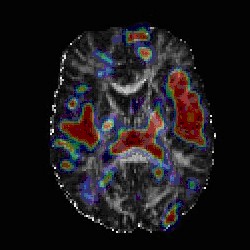Researchers at the Mayo Clinic in Phoenix and clinician colleagues in Arizona found smartphones could exchange acceptable teleradiology images for stroke diagnosis under real-world conditions. The findings from this clinical trial appear online in the journal Stroke.
The research, led by Mayo Clinic neurologist Bart Demaerschalk, tested the smartphone application ResolutionMD used to transmit CT scans of stroke patients taking part in the clinic’s Telestroke network in Arizona. Demaerschalk is also medical director of the network. In Telestroke care, patients at a rural hospital can be seen in real time by a neurology specialist, typically working from a desktop or laptop computer in Phoenix.
The Mayo Clinic stroke neurologist can consult via online conferencing with emergency room physicians at the rural sites and evaluate the patient. The neurologist in Phoenix can also view scans of the patient’s brain to detect possible damage from a hemorrhage or blocked artery. Patients can then be administered clot-busting medications, if needed, within the narrow window of time for minimizing permanent injury to the brain.
The study compared the quality of CT scan images exchanged with the ResolutionMD application to the same types of images and information viewed with desktop computers. The images were those of 53 real stroke patients at the Yuma, Arizona Regional Medical Center.
Radiologists in Yuma reviewed the CT scans, as well as a separate independent panel of stroke neurologists, to determine the level of agreement between the images sent through current telemedicine technology and the new images and scans on smartphones interpreted by Telestroke doctors. The study shows there was a high level of agreement (92 to 100 percent) among all the reviewers on the most important radiological features.
Commenting on the potential of smartphones for telemedicine, Demaerschalk says, “If we can transmit health information securely and simultaneously use the video conferencing capabilities for clinical assessments, we can have telemedicine anywhere.” Demaerschalk notes that more than 40 percent of Arizona’s population does not have access to immediate neurologic care.
Demaerschalk tells more about and demonstrates the smartphone app in the following video.
- HHS Awards First Health Care Innovation Awards
- Benefits Found for Telemedicine in Diagnosis, Disease Mgmt
- Inexpensive Flow Cytometer Developed on Cell Phone Platform
- High-Capacity Bandwidth Provided for Research Institutions
* * *


 RSS - Posts
RSS - Posts
You must be logged in to post a comment.